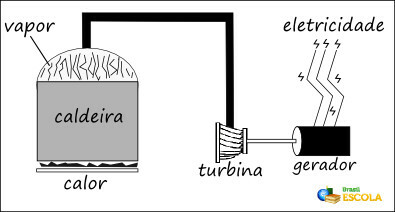Natural gas is composed of a mixture of light hydrocarbons (methane, ethane, propane, butane and others gases in smaller proportions) that subjected to ambient temperature and atmospheric pressure remains in the state gaseous. It is an energy source found in nature in two distinct forms. It can be obtained in deposits and by burning biomass (sugarcane bagasse).
Natural gas found in deposits is usually associated with oil. It constitutes finite reserves, and, according to research carried out by the IEA (International Energy Agency), if the pace of average consumption of the last decade is maintained, the natural gas deposits will be depleted in 100 years old. This energy source is less harmful to the environment than oil and coal. However, as it is of fossil origin, its combustion contributes to the greenhouse effect.
Biogas, on the other hand, obtained from biomass, is a renewable fuel, its use is less impactful and economic costs are lower.
The pipelines responsible for sending natural gas from producing sources to consumers are called a gas pipeline. Brazil has the Bolivia – Brazil gas pipeline. They are large-diameter pipes operating at high pressure that transport natural gas from Bolivia (producer) to some Brazilian states (consumers).
Do not stop now... There's more after the advertising ;)

pipeline
After being treated and processed, natural gas can be used in industries, homes, automobiles and commerce. In industries, its use occurs mainly for the generation of electricity. In homes, natural gas is used for space and water heating. In automobiles, this energy source replaces fuels (gasoline, alcohol and diesel). In commerce, its use is mainly for environmental heating. Currently, the use of natural gas corresponds to 15.6% of the world's energy consumption.
In Brazil, with the discovery of the pre-salt layer, which consists of an oil in deep layers - from 5 to 7 thousand meters below sea level, estimates indicate that the country will double its volume of natural gas.
By Wagner de Cerqueira and Francisco
Graduated in Geography
Would you like to reference this text in a school or academic work? Look:
FRANCISCO, Wagner de Cerqueira e. "Natural gas"; Brazil School. Available in: https://brasilescola.uol.com.br/geografia/fontes-gas-natural.htm. Accessed on June 27, 2021.


